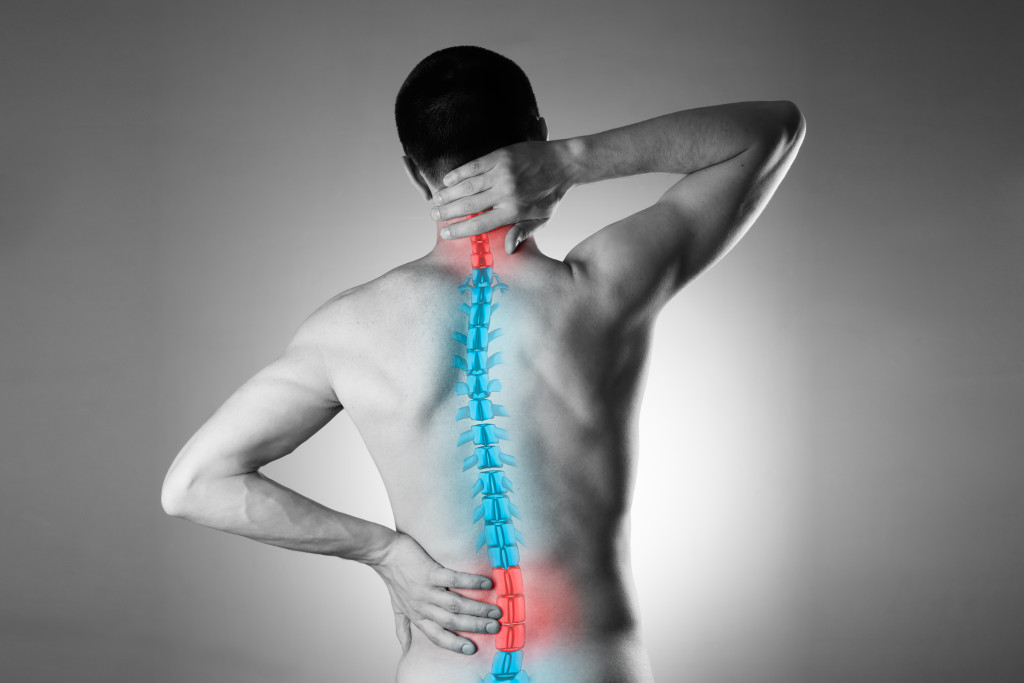Living with scoliosis can be difficult, but it doesn’t have to keep you from living a normal life. Here are some tips that can help you stay active and live your life while managing the physical effects of scoliosis.
Get Regular Check-Ups:
Scoliosis patients need to get regular check-ups from an orthopedic specialist. They can monitor the progression of your condition and provide guidance on how to manage it.
They will also know when to adjust treatment or take more serious steps, such as surgery. For example, if the curvature of your spine is getting worse, they can recommend a more aggressive course of treatment.
In addition, regular check-ups can help you stay on top of any pain or discomfort associated with scoliosis. They can also detect early deterioration and refer you to a specialist if necessary.
Consider Non-Surgical Correction:
For patients who would prefer to avoid the risks associated with surgery, an effective non-surgical scoliosis correction might be an option. This treatment is designed to address the underlying causes of scoliosis and help correct spinal curvatures without requiring invasive procedures.
It may include physical therapy, bracing, or other methods such as traction and exercises that can help strengthen your core muscles, improve posture, and reduce pain. For instance, Schroth Method therapy is a form of physical therapy that helps to rebalance the body by encouraging patients to practice specific postural exercises.
Moreover, non-surgical correction can help you maintain better posture and prevent further spinal curvature. This is because these corrective strategies can help the body to adopt a more balanced posture, which can, in turn, reduce stress on the spine.
Exercise Regularly:
Exercise is one of the best ways to improve flexibility and strength for those with scoliosis. This doesn’t mean you have to become a gym rat; low-impact activities like walking, swimming, yoga, and Pilates are all excellent choices for people with scoliosis because they don’t put extra strain on the spine.
Make sure to consult with your doctor before starting any exercise routine. For starters, they can recommend which exercises are best for your particular case and how often and for how long you should be exercising.
By staying active, you can also prevent further curvature of the spine and reduce pain associated with scoliosis. Exercise can help improve posture and balance and increase flexibility in the muscles that support the spine.

Use Assistive Devices:
Assistive devices such as braces or posture correctors can help reduce pain and discomfort associated with scoliosis by helping your body maintain proper alignment while standing or sitting. These devices can also help prevent further curvature in cases where the condition is still mild or moderate, so make sure you talk to your doctor about what options are available for you.
For example, an underarm brace can help push the shoulders back and hold the spine upright, while a lumbar corset is designed to provide additional support for the lower back.
Using assistive devices can be especially helpful when dealing with pain or discomfort due to scoliosis. The key is to make sure you find the right one for your particular condition.
Incorporate Ergonomic Furniture:
Having ergonomic furniture in your home is vital for anyone with scoliosis since it helps support proper posture and reduces unnecessary strain on the spine when sitting or lying down.
Investing in ergonomic furniture such as chairs, mattresses, and pillows may seem like an unnecessary expense at first, but it will pay off in the long run as it helps reduce pain and discomfort while making everyday activities easier and more comfortable overall.
Furthermore, make sure to keep your desk and workstation in an ergonomic position as well, which will help you maintain the correct posture while working.
Practice Mindful Habits:
Practicing mindful habits such as deep breathing exercises, meditation, stretching, and massage therapy can help reduce stress levels which often worsen symptoms of scoliosis due to muscle tightness caused by tension buildup over time — which makes them even more critical for those living with this condition!
Additionally, these practices may also provide mental clarity, which can aid in making better decisions regarding treatment options or lifestyle changes related to living with this condition. For example, deep breathing exercises are often recommended for those with scoliosis, as they help to stretch and relax tight muscles in the back, shoulders, and hips.
Finally, make sure to consult with your doctor or physical therapist about any lifestyle changes you’d like to make regarding living with scoliosis. They can provide valuable insight into the best ways to proceed with treatments and lifestyle modifications in order to live as comfortably and normally as possible.
No matter your condition, there are always ways to stay active and live normally despite physical limitations. For those with scoliosis specifically, there are some key tips that should be followed: getting regular check-ups from an orthopedic specialist, considering non-surgical correction, exercising regularly, using assistive devices, incorporating ergonomic furniture into your home, and practicing mindful habits such as deep breathing exercises and meditation. With these tips in mind, you’ll be able to live an active lifestyle even while managing the physical effects of scoliosis!
